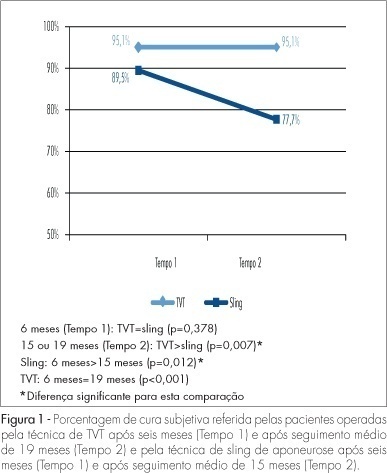Summary
Revista Brasileira de Ginecologia e Obstetrícia. 2015;37(3):115-118
DOI 10.1590/SO100-720320150005257
To evaluate the treatment outcome of tubo-ovarian abscesses managed by transvaginal ultrasound-guided aspiration.
Descriptive analysis of all patients with tubo-ovarian abscesses treated with a minimally invasive procedure, ultrasound-guided drainage, at the Department of Gynecology, Centro Hospitalar Vila Nova de Gaia/Espinho, during a period of 5 years (from June 2009 to June 2014).
Twenty-six cases were included in the study. The mean age of the study group was 42.8 years. All patients were submitted to transvaginal ultrasound-guided aspiration and sclerosis with iodated solution, as well as received broad-spectrum intravenous antibiotics. The mean time from admission to drainage was 2.5 days. Cultures for aerobic and anaerobic pathogens were positive in 14 of the 26 cases. A complete response was noted in 23 of the 26 cases. No complications or morbidity were noted as a consequence of the drainage procedures.
Minimally invasive treatment of tubo-ovarian abscesses by transvaginal ultrasound-guided drainage is an effective and safe approach.
Summary
Revista Brasileira de Ginecologia e Obstetrícia. 2008;30(3):127-134
DOI 10.1590/S0100-72032008000300005
PURPOSE: to compare sling operations of aponeurosis and tension-free vaginal tape (TVT) for the correction of stress urinary incontinence (SUI) regarding: the rates of subjective and objective healing, the mobility of the bladder neck with ultrasonography, the variation of the absorbent test, the urodynamic alterations and the incidence of complications. METHODS: eighty patients with SUI were selected. Among them, 61 underwent a TVT surgery and 19, an abdominal rectum sling operation of aponeurosis. Average age, index of body mass and parity were 50.1 years old, 29.7 kg/m² and 4.1 deliveries (median=3) for the patients with aponeurosis sling, and 51.7 years old, 28.1 kg/m² and 4.1 deliveries (median=3) for the ones with TVT. All of them have undergone anamnesis, physical examination, bladder neck ultrasonography, absorbent test and urodynamic evaluation before and at least six months after the surgery. After 15 or 19 months and after about four or five years, they were again interviewed concerning the surgery results. RESULTS: after six months, 96.7% of the women with TVT and 89.5% of the ones with sling thought they were healed in the subjective evaluation. Nevertheless, after 15 to 19 months, the TVT Group kept the same subjective healing rate, while among the Sling Group the rate decreased to 77.8%. There was a significant decrease in the mobility of the neck bladder that was similar in both groups and an improvement in the absorbent test. At the end of the urodynamic study, 93.4% of the women from the TVT Group and 78.9% of the ones from the Sling Group were classified as having an objective healing. The average time of bladder probing was higher in the Sling Group. Urinary retention was observed in 42.1% of the sling cases and in 9.8% of the TVT's. The rates of late healing were 90% for TVT and 55.6% for sling. CONCLUSIONS: TVT surgery provided better subjective healing after 15 or 19 months, but the rate of objective healing was the same in both techniques at that time. Among the complications detected, the urinary retention was higher in the Sling Group, in the post-surgery period.
